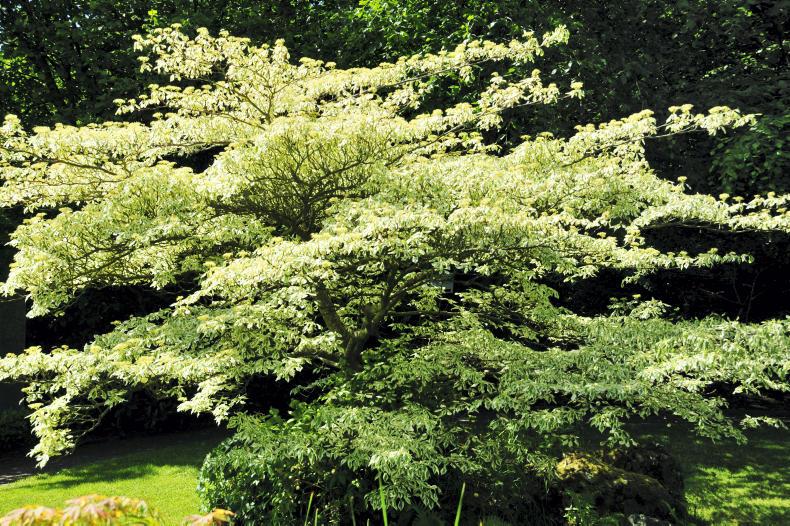Yellow poppy is considered to be rare, only occurring in a few mountain areas. If it is found elsewhere, the chances are that it was a garden escape. It is not surprising that it escapes from gardens, because it is very prolific with its seeds. Its slender pods produce lots of small round seeds that easily stick to soil on footwear, tools or cars. This is a feature of the poppy family in general. If it has turned up by itself in your garden, it might have come in on the pot of another plant.
One of the most charming things about the Welsh poppy is the manner in which it self-sows in gardens, once established. Once a few plants are introduced, the seeds will scatter and arrive in suitable spots. These self-sown plants always seem to grow in the most decorative of locations — places that we might never think of planting them ourselves. The Welsh poppy reaches only knee-height, about the same as the wild red poppy of roadsides.
The flowers are large for a wild flower and they are carried on slender single stems. The flower heads nod down as they open, but then turn upright. The leaves are bright green and fern-like in structure.
There are various forms of Welsh poppy, the most beautiful being the simple, pale yellow variety. There are also orange forms and double-flowered forms. If these selected garden types are grown with the plain yellow type, a series of intermediate types is produced, some of them pale orange and with slightly frilly flowers. The individual plants are not very long-lived, just a few years. But there are always young plants coming along to replace them. eds if they look a bit too tired.
The ideal place for the Welsh poppy is in semi-wild part of the garden, the same sort of ground that suits wild primroses or bluebells. The cover of vegetation overhead should not be too great, or the shade too heavy, but this plant is resilient and manages to grow well in most situations.
Welsh poppy has the botanical name of Meconopsis cambricca, and it is closely related to the blue Himalayan poppy, which is also meconopsis. The Welsh poppy is much smaller than its Asiatic cousin, and a different colour, but the resemblance is clear. The blue poppy is more tricky to grow and must have ideal conditions, while the yellow poppy is as easy as they come.
Dozens of small plants are easily raised from a single packet of seeds. Sow the seeds in a seedtray of compost and cover with glass to keep the surface moist. Make sure to prick them out into small pots while the seedlings are still small, because they quickly crowd each other in the seed tray.
Prick them out singly or as a small bunch of three or four seedlings. Cell-trays are very handy for this process, as it easy to accommodate dozens or scores of young plants, if you want to make a quick impact by planting drifts of poppy plants. The little plants can be planted out in the late summer or autumn to begin flowering the following year. After that, only an occasional tidy-up is needed, if even that – an ideal flower for a country garden! CL
Training a wedding cake
Some trees and shrubs make a tiered “wedding-cake” structure, such as the wedding cake dogwood or viburnum. But some plants can be slow to make height or new tiers and tend to grow wider. In the natural way, an occasional upright shoot is made and this grows to form a new layer of wedding cake or of weeping branches. If a tree or shrub is tardy about making height, it can be given encouragement by selecting a young, strong but pliable branch at the top and tying it upright to a strong cane, which is in turn tied to the plant itself. This gives the upright branch more nutrients and it usually, though not always, takes off nicely. Leave the cane in position for a year or so.
Trees, shrubs and roses
Continue to tie in the new shoots of climbing roses. Prune early summer shrubs as they go out of flower, if necessary, such as broom and weigela. Broom can be pruned by cutting back the flowered shoots to within about 5cm immediately after flowering. Check young trees for water shortage.
Lawns
Continue mowing regularly to match grass growth, and heavy mowing will become less as the period of vigorous grass growth passes. Keep the edges around kerbs and flower beds or borders trimmed to maintain a neat appearance. Do not use lawn weedkillers is you want to have wild flowers.
Fruit, vegetables and herbs
Plant out tender vegetables – such as sweet corn, outdoor tomatoes and runner beans – in good weather. It is important to keep ahead of weeds by hoeing while they are still small and after any few days’ rain. Repeat-sow vegetables sown earlier in the year, such as lettuce, peas and carrots.
Flowers
Bedding plants should be planted out now. Be sure to water the young plants immediately after planting out and every few days, until they are actively growing, unless there is heavy rain. A liquid feed will encourage rapid establishment. Watch out for slugs and snails in the first few weeks.
Greenhouse and house plants
Continue to feed greenhouse plants strongly and to water well. Spray a grapevine with rose spray if it had mildew disease last year. House plants can be re-potted now. Plant out tomatoes, chilli peppers, cucumbers and sweet peppers in the greenhouse soil as soon as possible.






 This is a subscriber-only article
This is a subscriber-only article











SHARING OPTIONS: